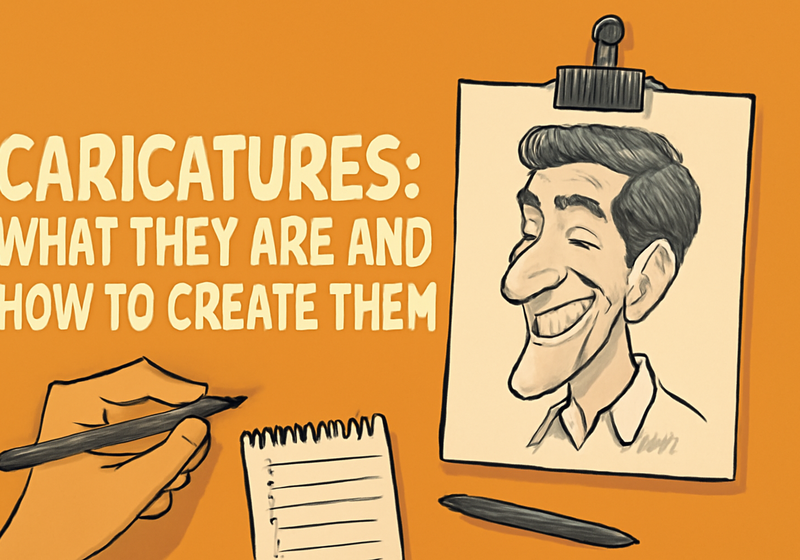Table of Contents
Introduction: What Is a Caricature?
A caricature is an artistic representation that exaggerates and distorts certain physical, expressive, or behavioral features of a person or subject. Its primary goal is to create a recognizable yet deliberately altered image that evokes an emotional reaction—whether surprise, amusement, or critical reflection. Unlike a traditional portrait, which aims to faithfully reproduce a person’s appearance, a caricature emphasizes distinctive traits such as a prominent nose, unique eyes, or personality quirks to depict the subject in an ironic or satirical way.
Caricatures can be created for humorous purposes or to convey social, political, or cultural messages. They often appear in newspapers, satirical magazines, public events, or as entertainment at fairs and festivals. Their effectiveness lies in distilling an individual’s personality or attitude into a few lines, often expressing much more than a realistic portrait could.
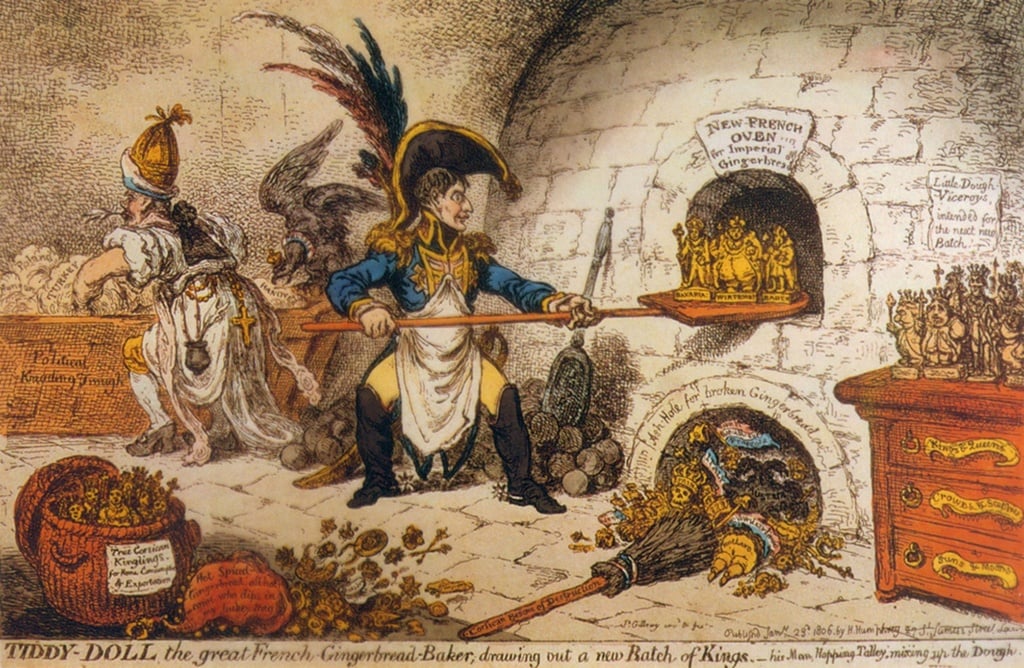
History of Caricature: From Origins to Today
1. Ancient Origins
The roots of caricature reach far back into ancient times, long before it became the modern art form we recognize today. In Ancient Egypt and Ancient Rome, there are examples of images that deliberately distorted human features for humorous or symbolic purposes. For example, some ceramics and frescoes depict figures with exaggerated traits to highlight their roles or actions.
During the Middle Ages, grotesque and caricatured representations appeared in illuminated manuscripts and sacred art, often with moral or educational intentions. These distorted images served to highlight vices, sins, or negative behaviors, using striking visuals to communicate quickly and powerfully.
2. Renaissance and Technical Development
During the Renaissance, art focused on the detailed study of human anatomy and proportions. However, there was also a growing interest in expressive deformities. A key example is Leonardo da Vinci’s “Grotesque Heads,” where the artist explored the expressive possibilities of the human face by drawing distorted, caricatured, and highly expressive faces.
These studies anticipated the birth of caricature as an autonomous art form, combining technical skill and irony to create images capable of expressing not only physical appearance but also the psychology and character of individuals.
3. Modern Era and Political Satire
In the 18th century, caricature took on a more defined and recognizable form, becoming a fundamental tool for political and social satire. In England, artists such as James Gillray and Thomas Rowlandson produced sharp caricatures that commented on political events, scandals, and public figures, often provoking strong reactions and controversies.
In Italy and other countries, caricature played a significant role in social and political critique. Through cartoons and drawings, artists denounced corruption, injustices, and hypocrisies, helping to spread ideas and stimulate public debate.

4. Contemporary Caricature
In the 20th century, with the rise of mass media, caricature spread even further, adopting diverse and experimental forms. Visual satire appeared in newspapers, animated cartoons, advertising campaigns, and even contemporary art.
Today, thanks to digital technologies, caricature is more accessible and versatile than ever. Software and apps allow anyone to create digital caricatures in minutes, while professional artists continue to use this art form to comment on society, politics, and culture in innovative ways.
How to Create a Caricature
1. Traditional Techniques
Creating a traditional caricature requires keen observation and skilled handwork. The artist often begins with a pencil or charcoal sketch, defining the main features of the subject and identifying key elements to exaggerate. The ability to capture the most significant details—such as the shape of the nose, the width of the mouth, or the tilt of the eyes—is essential.
The caricature may then be outlined with ink, pastels, or watercolors to add nuances, colors, and contrasts that make the image lively and impactful. This stage requires care to maintain legibility and recognizability.
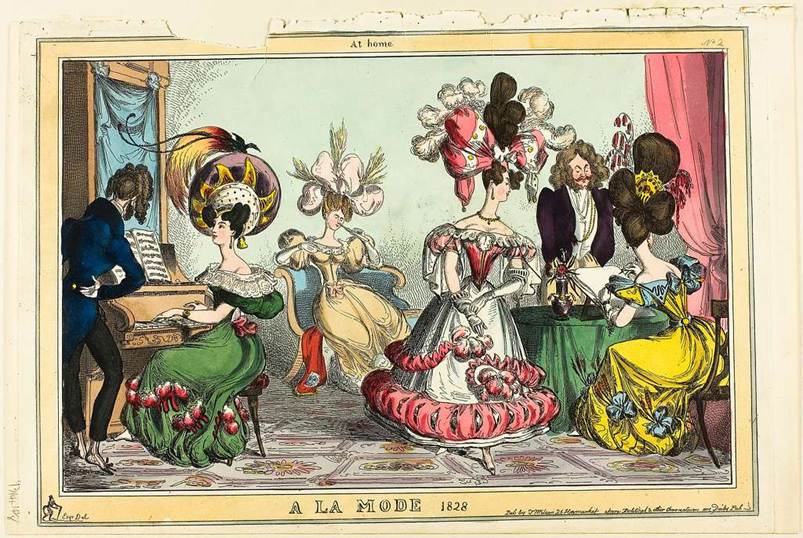
2. Digital Techniques
With technological advancement, caricatures are frequently created or refined using graphic software like Adobe Photoshop, Illustrator, or digital drawing programs such as Procreate. These tools allow artists to work with layers, colors, and special effects quickly and precisely.
Additionally, numerous apps and online platforms enable users to create caricatures from simple photos. These automatic tools employ artificial intelligence algorithms and filters to transform faces into caricatures, often delivering fun and immediate results.
3. Fundamental Steps in Creating a Caricature
- Detailed observation: Analyze the subject’s distinctive features.
- Creative exaggeration: Amplify certain details to achieve a comic or critical effect.
- Balance between distortion and recognition: Keep the subject easily identifiable.
- Personal style: Develop a unique visual language that may be softer, stylized, or sharper, conveying more than just an image.

Uses of Caricature
Caricature today has many applications, demonstrating its versatility and communicative value:
- Political and social satire: As a tool to criticize, denounce, and comment on public events and behaviors with irony and provocation.
- Entertainment: Many artists create live caricatures at events, fairs, or parties to amuse and engage audiences.
- Marketing and advertising: Caricatures are used in creative campaigns to humanize brands and foster emotional connections with customers.
- Contemporary art: Some artists use caricature to explore social, cultural, or personal themes, blending irony with reflection.
Where to find caricatures and caricature illustrators online
The web is a true treasure trove for those looking for custom caricatures or wanting to explore the work of specialized illustrators. Here are some reliable platforms where you can find them:
- Fiverr – A global marketplace where hundreds of illustrators offer digital and traditional caricatures at competitive prices.
👉 https://www.fiverr.com - Etsy – Ideal for purchasing personalized caricatures, often hand-drawn or digitally styled, perfect also as gifts.
👉 https://www.etsy.com - Upwork – A platform for professional freelancers where you can hire illustrators for custom projects.
👉 https://www.upwork.com - Instagram – Great for discovering emerging artists: search hashtags like #caricatureartist or #digitalcaricature to see real examples and contact creators directly.
👉 https://www.instagram.com - Behance – An online portfolio platform for creatives and illustrators where you can browse different styles and contact professionals.
👉 https://www.behance.net - Redbubble – An art print marketplace where some artists sell ready-made caricatures or offer custom commissions.
👉 https://www.redbubble.com - Society6 – Similar to Redbubble, it allows you to purchase artworks, including caricatures, printed on various media.
👉 https://www.society6.com
Many illustrators also offer personalized services on their own websites, so a simple Google search with terms like “freelance digital caricature artist” can help you discover additional independent talent. When choosing an online caricature artist, remember to:
- Review portfolios to understand their style.
- Read client feedback and ratings.
- Compare prices, delivery times, and terms to avoid surprises.
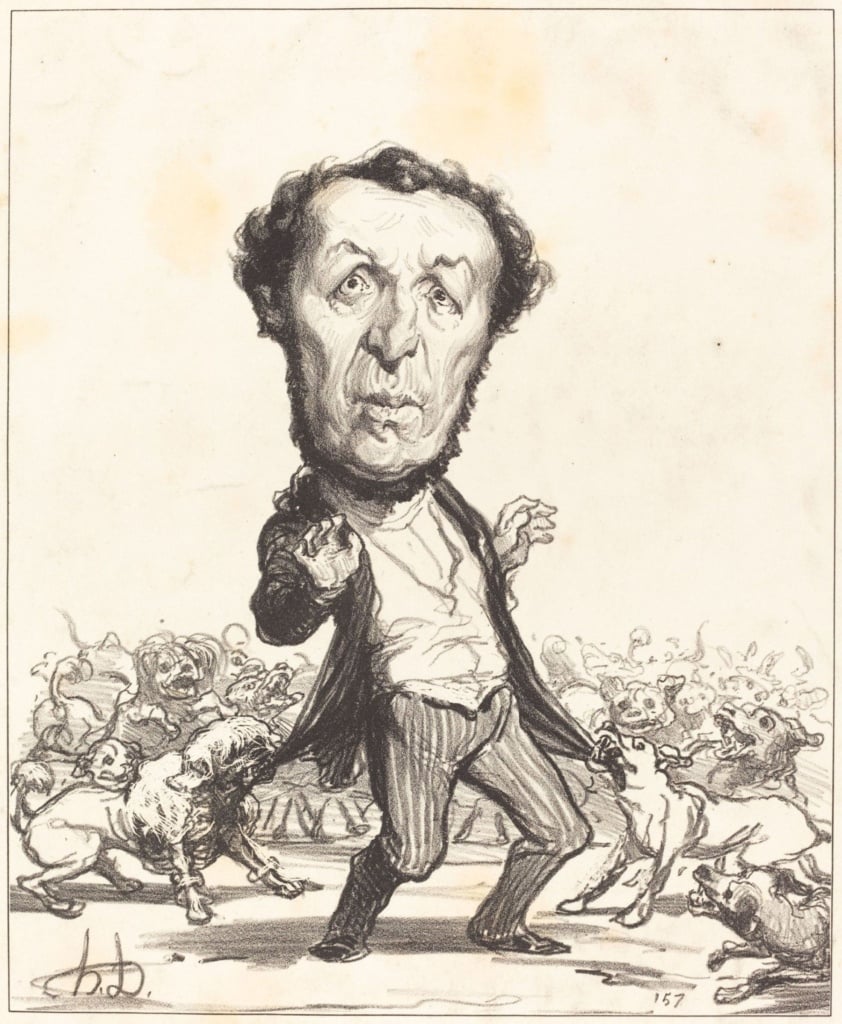
Famous Caricaturists: Some of the Best Illustrators
The history of caricature is rich with talented artists who have defined the genre with their unique style and ability to capture the essence of their subjects. Some of the most renowned worldwide include:
- Honoré Daumier (1808–1879, France): Considered one of the fathers of modern political caricature, famous for his sharp social satires in the 19th century.
- James Gillray (1756–1815, United Kingdom): A master of English political satire, known for his vivid and biting caricatures in the 18th century.
- Al Hirschfeld (1903–2003, United States): Famous for his caricatures of theater and film celebrities, recognizable for his fluid and dynamic line work.
- David Levine (1926–2009, United States): Illustrator and caricaturist noted for his portraits published in “The New York Review of Books”.
- Ranan Lurie (1932–2022, Israel/USA): Renowned political caricaturist and multiple international award winner.
- Achille Beltrame (1871–1945, Italy): One of Italy’s most important illustrators and caricaturists, famous for his covers and caricatures published in “La Domenica del Corriere”.
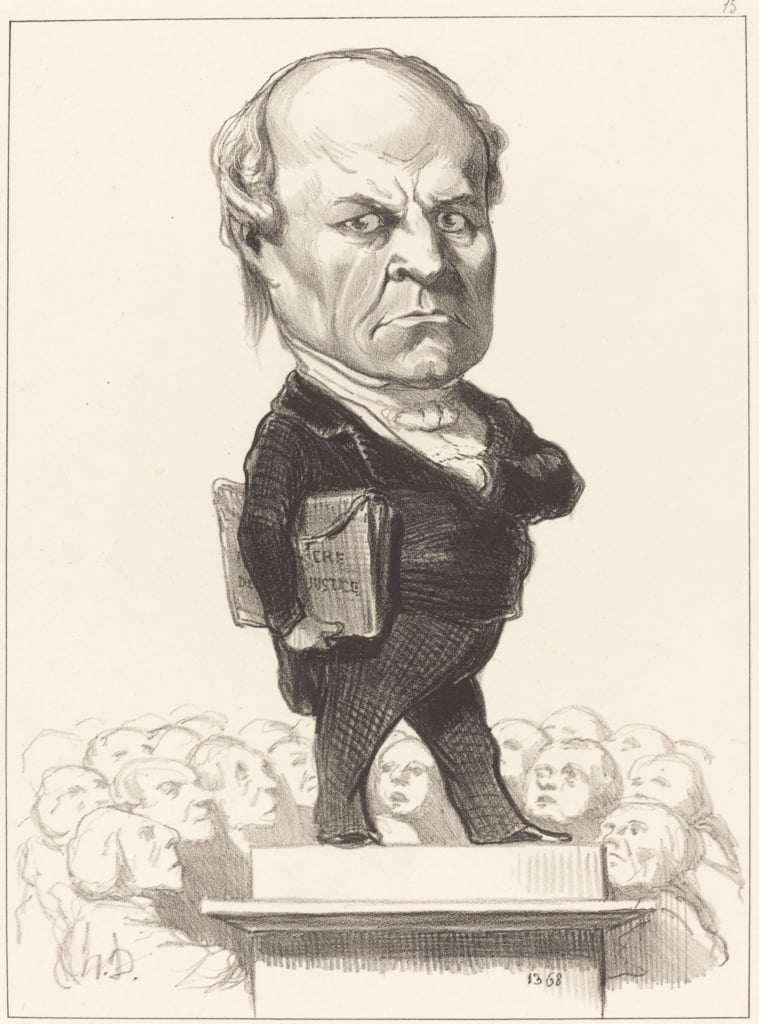
Caricature: Much More Than Just a Drawing
Caricature is far more than just a humorous or grotesque drawing: it is a complex and fascinating art form that combines technical skill, psychological insight, and critical spirit. Its long history, from antiquity to modern digital tools, proves its ability to adapt and remain relevant.
Knowing the history, techniques, and many uses of caricature allows one to appreciate not only its aesthetic value but also its significant role in communication, satire, and entertainment.
If you are interested in learning how to create caricatures or diving deeper into this exciting artistic world, you can explore tutorials, courses, and specialized tools or turn to professionals who have made it their art.

